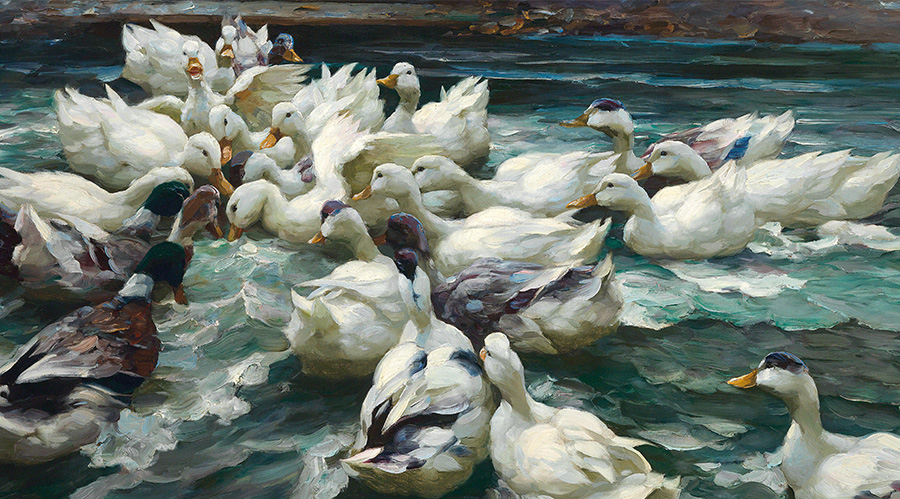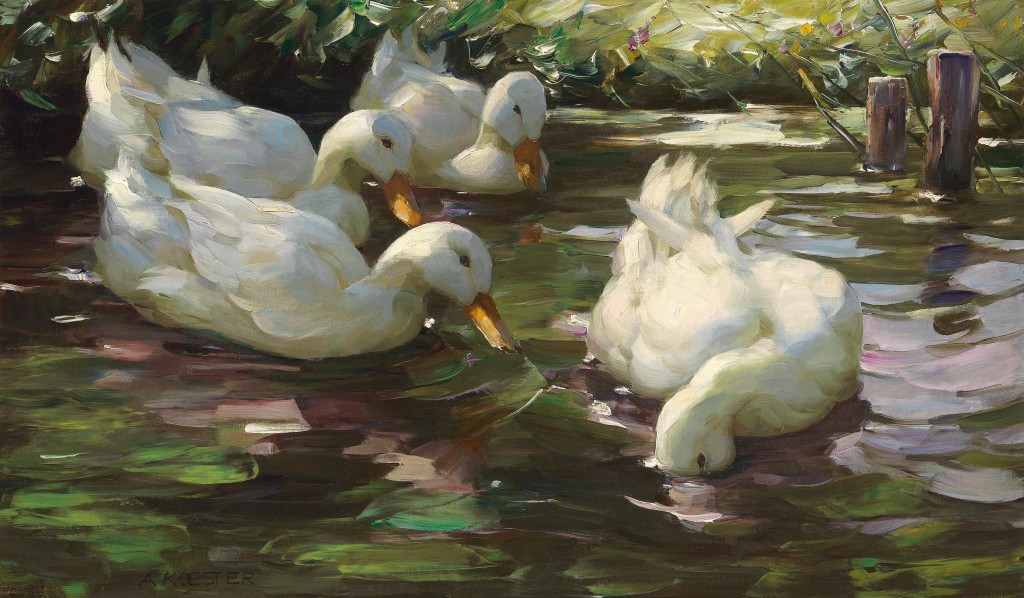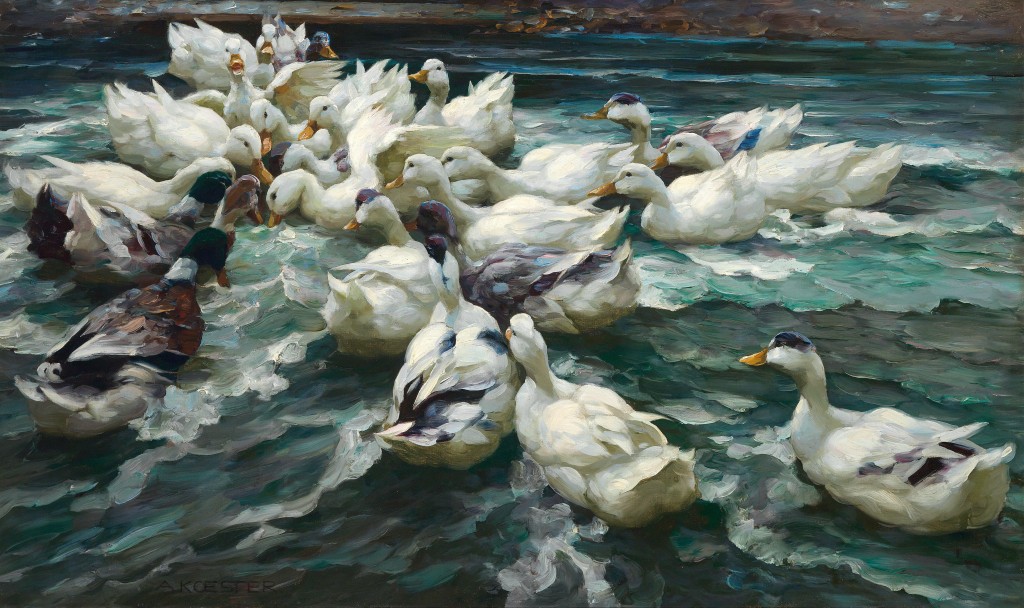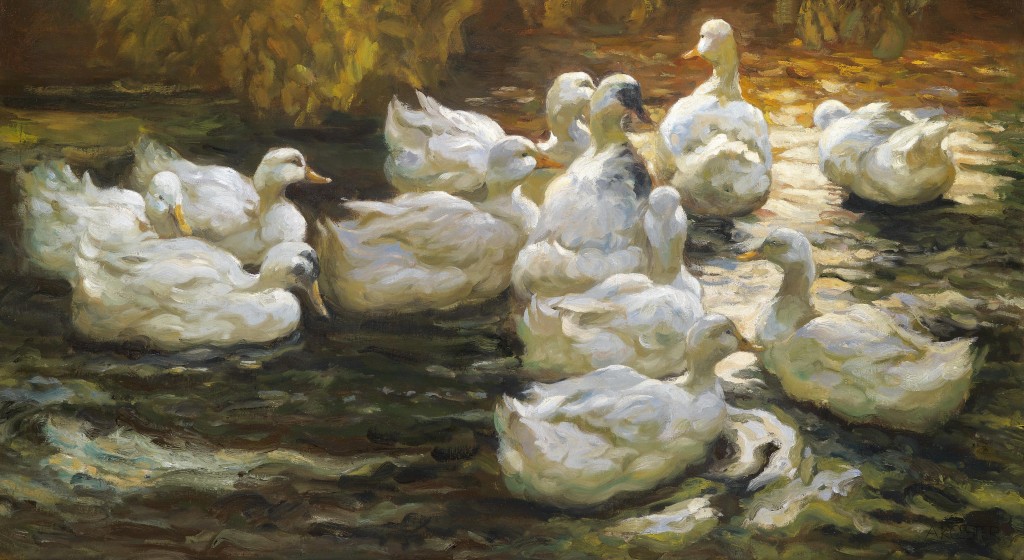
The upcoming auction week offers two of the sought-after duck scenes by Alexander Koester, who came to be known as ‘Duck-Koester’, an exceptional 19th century artist. Koester made the duck an acceptable and variable motif in his paintings, which convey the joy of rediscovering nature through the sensitive regard of the artist.
He was meant to become a pharmacist: However, Alexander Max Koester, son of a stocking manufacturer, decided to go against his parents wishes and, after finishing his training as a pharmacist, enrolled at the Karlsruhe Academy to study art under Karl Hoff and Claus Meyer. He complemented his studies with extensive travels, though it was not long before he was able to make a modest living by portrait- and genre painting. The year 1896, when he moved to the South Tyrolean resort town of Klausen, marks the beginning of his most fertile creative period. Koester joined the local art colony (“Klausner Kunstkolonie”, 1874–1914) and increasingly turned towards landscape painting.

Similar to the classic Impressionists, he felt the need to work outside and produced numerous plein air works. It is hardly surprising that during his excursions the young painter became very familiar with the fauna around Klausen. What was unusual was his growing fascination with ducks. Koester the painter gradually became “Duck-Koester”, who dedicated the next thirty years of his career to a wide range of variations on this hitherto little regarded object of artistic study.

Alexander Koester, represented at the Dorotheum auction by his two works “Wild Hunt” and “Four ducks on the Pond” , combines the animation of his favourite motif with extensive studies of the surface of the water and the element of light. Nobody else was able to capture the animation of the scene and the flock of ducks with just a few generous brush strokes, yet with such a sense of atmosphere. This ability gained him considerable attention and even admiration throughout his lifetime. In 1904, for example, he was awarded the gold medal for his painting “Ducks” at the St. Louis World Fair. As Wilhelm Busch once put it “All’s well that quacks well” (“Ente gut, alles gut!”) – numerous other awards followed and the art market soon came up with a rule that measured the value of a painting by the number of ducks it showed. It is claimed that art dealers would simply count the number of animals in the painting to establish its price.
Although, towards the close of his life, Koester, living by Ammersee Lake, increasingly turned towards floral still lifes, he never quite stopped painting ducks, to the considerable satisfaction of the admiring public.

“The magnitude and importance of his work is recognised and, with Southern German animal painting from 1900 onwards enriched by his affectionate interpretation of this theme, his rank as an expert in painting ducks confirmed. Familiarity with his oeuvre as a whole reveals that Alexander Koester deserves the highest level of recognition for his landscapes, portraits and flower paintings. Conservative in his approach to form, Impressionist in his approach to light and its reflexes, the ‘modernity’ of his animal compositions renders him an innovator, the artist’s creativity extending to many fields. His painting has retained its life-affirming impact to this day, as well as its positive power…” (Quote from R. Stein, H. Koester, op. cit., p. 58).
Auction 19th Century Paintings
Thursday, 22nd October 2015, 5 pm
Public Viewing: 10th October – 22nd October 2015
Palais Dorotheum













